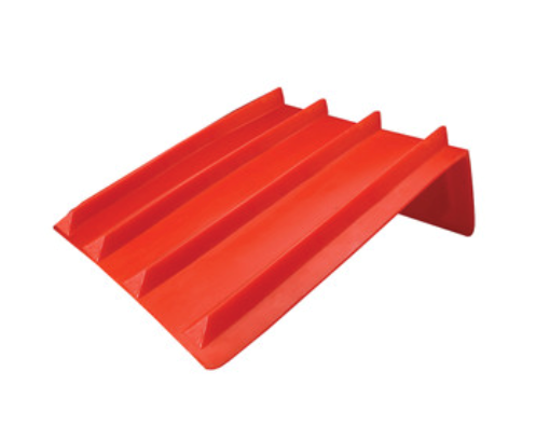
Understanding Regulations Requiring Corner Protectors for Tie-Downs
Understanding Regulations Requiring Corner Protectors for Tie-Downs
Transporting cargo safely and securely on the road requires strict adherence to various regulations. Among these, the use of corner protectors when using tie-downs is essential for both legal compliance and ensuring the safety of the cargo, the vehicle, and other road users. Here, we’ll explore the regulations necessitating corner protectors, their purpose, and how to implement them correctly.
The Purpose of Corner Protectors
Corner protectors are small but crucial tools used to safeguard both cargo and tie-down straps. They are typically made from durable materials like plastic, rubber, or metal, and are designed to:
-
Prevent Strap Damage: Sharp edges on cargo can cut or wear down straps during transit, compromising their effectiveness.
-
Protect Cargo: Straps under high tension can dig into the cargo’s surface, potentially causing damage to sensitive materials.
-
Enhance Safety: By preventing straps from breaking or slipping, corner protectors reduce the likelihood of accidents caused by shifting cargo.
Regulatory Requirements
In the United States, cargo securement regulations are governed by the Federal Motor Carrier Safety Administration (FMCSA). Key rules addressing the use of corner protectors include:
-
-
States that tie-downs must be secured and protected from abrasion, cutting, or other damage that could compromise their integrity. Corner protectors are often necessary to meet this requirement when transporting loads with sharp or rough edges.
-
-
-
Mandates that all cargo securement devices and systems, including corner protectors, must have sufficient strength to withstand the forces of acceleration, deceleration, and lateral movement during transportation.
-
-
Best Practices and Standards:
-
Industry standards often recommend the use of corner protectors to distribute pressure evenly across the cargo, reducing the risk of strap failure and ensuring regulatory compliance.
-
The Consequences of Non-Compliance
Failing to use corner protectors where required can lead to several consequences, including:
-
Fines and Penalties: Violating FMCSA regulations can result in fines or being placed out of service.
-
Cargo Damage: Unprotected straps may break or cause damage to the cargo, leading to financial losses.
-
Increased Liability: In the event of an accident, non-compliance can increase liability and legal exposure for the carrier.
How to Implement Corner Protectors Correctly
To ensure compliance and safety, follow these steps when using corner protectors:
-
Choose the Right Material: Select corner protectors made from materials suited to your cargo type and transportation conditions.
-
Inspect Your Equipment: Regularly check tie-down straps and corner protectors for signs of wear or damage.
-
Proper Placement: Position the corner protectors at all contact points where straps meet sharp or abrasive edges.
-
Secure Fit: Ensure the corner protectors stay in place during transit and are compatible with the strap tension.
Conclusion
Corner protectors play a vital role in adhering to cargo securement regulations and maintaining road safety. By understanding and complying with FMCSA rules, transporters can avoid penalties, protect their cargo, and contribute to safer roadways. Investing in quality corner protectors and incorporating them into your securement practices isn’t just a regulatory requirement—it’s a commitment to professionalism and safety in the trucking industry.
